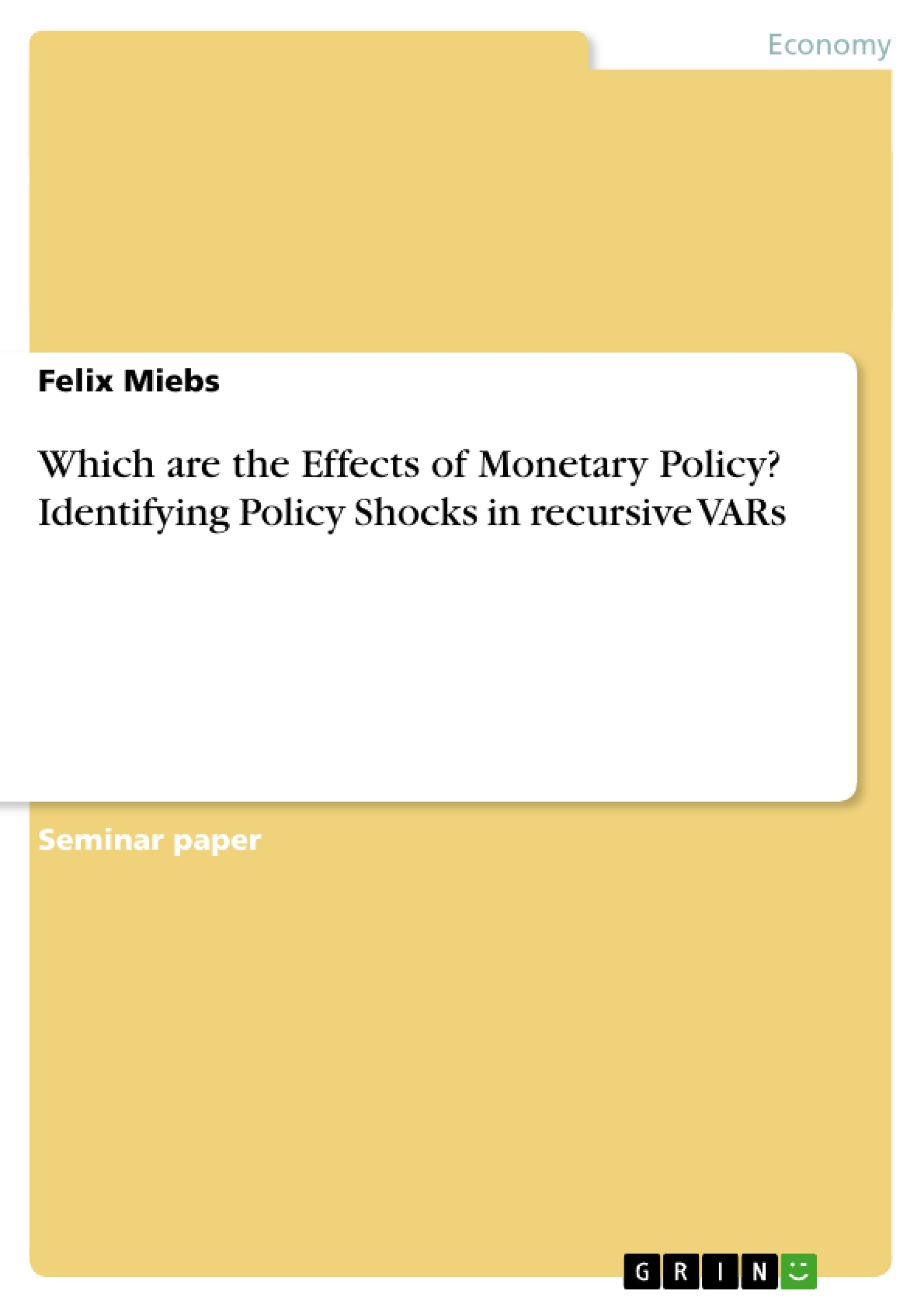1 Introduction
In the mid 70’s people started to doubt the validity of macroeconomic models as they were not able to forecast the worldwide recession due to the oil-price shock. These models needed an a priori seperation into endogenous or exogenous variables. This need for seperation was criticized by Sims (1980), who proposed as solution for this problem a Vector Autoregressive model (VAR). ”A VAR is an n-equation, n-variable linear model in which each variable is in turn explained by its own lagged values, plus current and past values of the remaining n-1 variables.”1 This offers the possibility that these variables influence each other mutually, which makes each of them endogenous.2
Let us put some economic background to these definitions. As we focus on monetary policy, we might be interested in the mutual relation and behaviour of the interest rate (r) and inflation (). For simplicity we just take these two variables with one lag into account. According to our setup we yield the following equation system:
(Die Formeln sind nur in der Download-Version verfügbar)
The equation system of (1) and (2) is called the primitive system, where (Ert) and (E(pi)t) are uncorrelated white noise disturbances.
2 Building a recursive VAR
In this section we will build a recursive VAR step by step. In the first section the primitive system will be transformed into the reduced form VAR. Building on that, we will focus on the identification of the primitive system, which finally will yield us the recursive VAR. Finally we abandon the exogenous assumption about the lag-length which we set for simplicity to one. This will let us end up with the methodology, which will enable us to apply the VAR toolkit to a real world situation.
Inhaltsverzeichnis (Table of Contents)
- Introduction
- Building a recursive VAR
- From the primitive system to the reduced form VAR
- Identification and the recursiveness aproach
- Lag-lenght selection criteria
- Application of the recursive VAR toolkit
- Data description
- The transmission mechanism of monetary policy
- The price puzzle
- Estimation of the model, determination of monetary shocks and impulse response functions
- Conclusion
- Appendix
Zielsetzung und Themenschwerpunkte (Objectives and Key Themes)
This seminar paper examines the determination and impact of monetary policy shocks using a recursive vector autoregressive (VAR) model. The paper first explores the technical aspects of building a recursive VAR model, illustrating these concepts with a simple two-variable VAR. It then applies this model to real-world data to analyze past monetary shocks in the USA and their effects on macroeconomic aggregates. The paper also addresses the "price puzzle" phenomenon and examines the monetary policy transmission mechanism.
- Monetary policy shocks and their impact on macroeconomic variables.
- Building and implementing recursive VAR models.
- Identifying and analyzing the transmission mechanism of monetary policy.
- Understanding the "price puzzle" and its implications for modeling VARs.
- Application of VAR models to real-world data analysis.
Zusammenfassung der Kapitel (Chapter Summaries)
- Introduction: This chapter introduces the concept of Vector Autoregressive (VAR) models as a solution to the limitations of traditional macroeconomic models. It provides an economic background for the analysis of monetary policy by examining the relationship between interest rates and inflation.
- Building a recursive VAR: This section outlines the steps involved in building a recursive VAR model. It covers the transformation of the primitive system to the reduced form VAR, identification of the primitive system, and addressing the exogenous assumption about the lag-length.
- Application of the recursive VAR toolkit: This chapter delves into the practical application of the recursive VAR framework to real-world data. It includes a discussion of data description, the transmission mechanism of monetary policy, the "price puzzle", and the estimation of the model to determine monetary shocks and impulse response functions.
Schlüsselwörter (Keywords)
The primary focus of this paper is on monetary policy shocks, recursive vector autoregressive (VAR) models, identification, and the transmission mechanism of monetary policy. The paper also discusses the "price puzzle" and the application of VAR models to analyze real-world data. Key concepts include the primitive system, reduced form VAR, lag-length selection, impulse response functions, and macroeconomic aggregates.
- Quote paper
- Felix Miebs (Author), 2006, Which are the Effects of Monetary Policy? Identifying Policy Shocks in recursive VARs, Munich, GRIN Verlag, https://www.grin.com/document/71446



